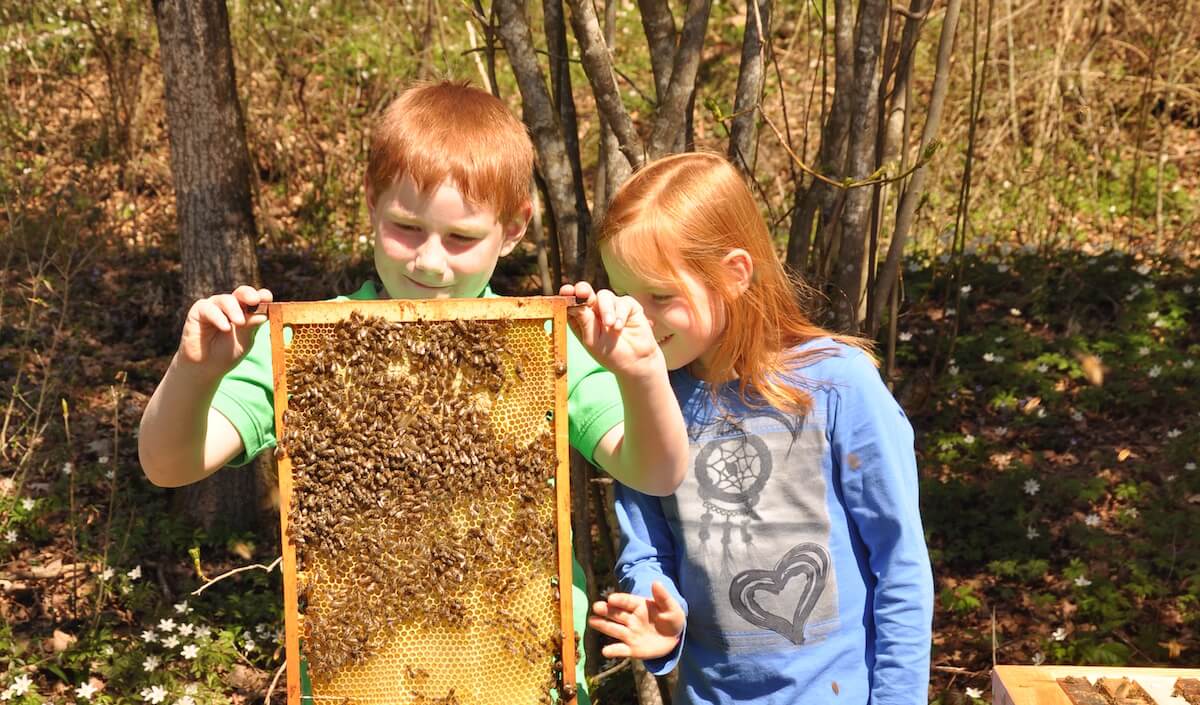Bee protection and environmental education at Mellifera eV

Bee protection is on everyone's lips. And that's a good thing! We've also been thinking about the topic more intensively over the past year and have come to the conclusion that we want to take action. Absolutely. That's why we've developed the " Bee Welfare " product range, consisting of seed bombs and seeds . But how exactly do we help the bees with this? It's simple: we do it hand in hand with you! You do it by throwing out the seed balls or sowing the seeds . This way, you create a valuable habitat for bees in no time. And we do it by collecting a portion of the proceeds and donating them every six months to an association or project that is actively committed to protecting bees. Let's start with the " Bees Make School " initiative from the non-profit organization Mellifera eV.
Who is Mellifera eV?
Mellifera eV is a non-profit organization founded in 1985 out of concern about the future of beekeeping – the Varroa mite. As this mite continued to spread in Europe, Mellifera's founders realized: We have to do something about this. Because if colony after colony is attacked and killed by the Varroa mite, things will look bleak for the world. The importance of the bee goes far beyond its function as a honey bee: First and foremost, of course, is pollination.  Author of all images in the blog post: Mellifera eV
Author of all images in the blog post: Mellifera eV
Mellifera:
“The bee is essential for the future of the planet and the entire ecosystem and must be protected at all costs!”
The mission of Mellifera
Careful treatment of bees is at the heart of the non-profit organization's work. This applies to both beekeeping practices and the care of their habitats. The goal is to create a world where bees, humans, and nature live in harmony. Since Mellifera focuses on beekeeping, the term "natural beekeeping" is often used in this context. What does this mean in practice? Among other things, no wing clipping; the bees are allowed to build their own combs, choose their own queen, and reproduce through natural swarming. More information on natural beekeeping according to Mellifera can be found here .
And what has Mellifera already achieved?
A lot! Mellifera eV was the first company in the world to successfully combat the Varroa mite with purely organic acids. But what we consider even more important: Since its founding, Mellifera has been involved in various initiatives (e.g., the " Blooming Landscape Network ") to protect bees and their habitats. Another important aspect of their work is environmental education... And we'd like to get involved!

Initiative: Bees go to school
We think the idea of raising awareness of bees among young people, our children, is simply fantastic! Through the " Bees in School " initiative, Mellifera has been successfully bringing together educational institutions, organizations, and associations for years. Through this initiative, children and young people have the opportunity to learn about bees as an endangered insect and experience them firsthand.
Through her work with bees, Mellifera is able to give the children a deep understanding of ecological relationships, thus laying the foundation for ecological awareness. True to the motto: What you know, what you love, you protect!
Or in Mellifera 's words: "Bees are a great way to help children and young people discover a love of nature. We bring beekeepers and educators together and are committed to giving young people the opportunity to learn with and from bees."

Do you want to get active yourself?
Mellifera has put together 5 tips for you on what you can generally and easily do for (wild) bees:
- Plant bee pasture and bee-friendly plants: These include catnip , borage, coneflower, speedwell, cornflowers , verbena, gypsophila, oregano , lavender , echinacea , yarrow, wild mallow, lungwort, fennel, thyme , clover, hardy sunflowers , snapdragons and of course our bee-friendly seed bombs and seeds .
- Leave a wild corner in your garden: Here you can let nature take its course. In practice, this means leaving wild plants and shrubs standing, and simply leaving fallen branches and twigs lying around. This creates nesting opportunities for birds and food sources for insects, which are a wonderful place to observe.
- Building a nesting aid for wild bees: There are plenty of instructions for homemade bee hotels online. While you wait for the first bees to arrive, you can pass the time by making a bee from an old tin can for your garden.
- Buy honey from a nearby beekeeper: A great platform to get to know and support regional beekeepers is, for example, nearbees .
- Tell others about the connections between bees, humans, and nature. With children, explore the topic in a playful way, for example, by hosting a honey breakfast with three or four different types of honey and guessing which flowering plants or honeydew the honey comes from.


